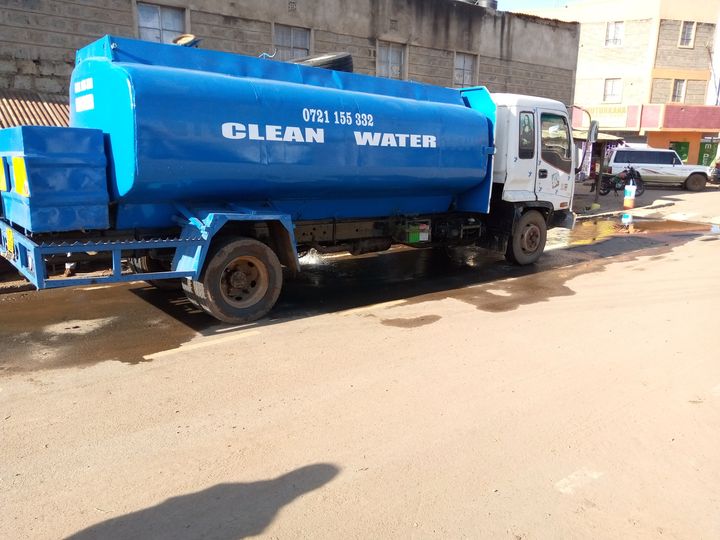If you are in Nairobi metropolitan area, get Clean water tanker supply services in Nairobi to supply safe and potable water to areas where access to clean water may be limited or temporarily disrupted by calling 0721155332. These tankers are typically operated by water service providers, non-governmental organizations (NGOs), or private companies specializing in water distribution.

If you’re looking to access clean water through a tanker service in Nairobi, you might consider the following steps:
- Contact Water Service Providers: Reach out to local water utility companies or government agencies responsible for water supply in Nairobi. They may operate clean water tanker services during emergencies or for areas with water shortages.
- NGOs and Aid Organizations: NGOs and humanitarian organizations sometimes provide clean water tanker services in areas facing water scarcity or emergencies. Contacting these organizations may provide information on tanker availability and distribution points.
- Private Water Suppliers: There are private companies in Nairobi that specialize in water distribution services. These companies often provide clean water tanker services for residential, commercial, or industrial purposes. You can search online or inquire locally to find private water suppliers operating in Nairobi.
- Community or Neighborhood Initiatives: In some cases, community or neighborhood associations may organize clean water tanker deliveries for their residents, especially in informal settlements or areas with unreliable water infrastructure.
When contacting or engaging with Clean water tanker supply services in Nairobi, it’s essential to ensure that the water provided meets safety standards and regulatory requirements to safeguard public health. Additionally, inquire about pricing, scheduling, and any documentation required for water delivery.
A water bowser pump, also known as a water tanker pump or water transfer pump, typically consists of several key components that work together to pump water from the bowser (tanker) to its destination. Here are the main components:
- Pump Body: The main housing that encloses the internal components of the pump. It provides structural support and protection.
- Inlet: The inlet is where water enters the pump from the water bowser’s tank. It’s usually connected to a hose or pipe that extends into the tank.
- Impeller: The impeller is a rotating component inside the pump that generates centrifugal force. As it spins, it creates suction and pushes water out of the pump.
- Motor: The motor powers the pump by converting electrical energy into mechanical energy. It drives the impeller to create the pumping action.
- Seals and Bearings: Seals prevent water from leaking out of the pump, while bearings support the rotating parts and reduce friction for smooth operation.
- Outlet: The outlet is where water exits the pump. It’s connected to a discharge hose or pipe that carries water to its intended destination.
- Control Mechanism: Depending on the design and complexity of the pump, it may include a control mechanism such as a switch or valve to start, stop, or regulate the flow of water.
- Safety Features: Some water bowser pumps may have built-in safety features such as overload protection or automatic shutdown mechanisms to prevent damage to the pump or motor.
These components work together to create suction for Clean water tanker supply services in Nairobi, draw water from the bowser’s tank, and discharge it through the outlet for various applications such as irrigation, construction, or emergency water supply. Regular maintenance and proper operation are essential to ensure the pump functions efficiently and reliably